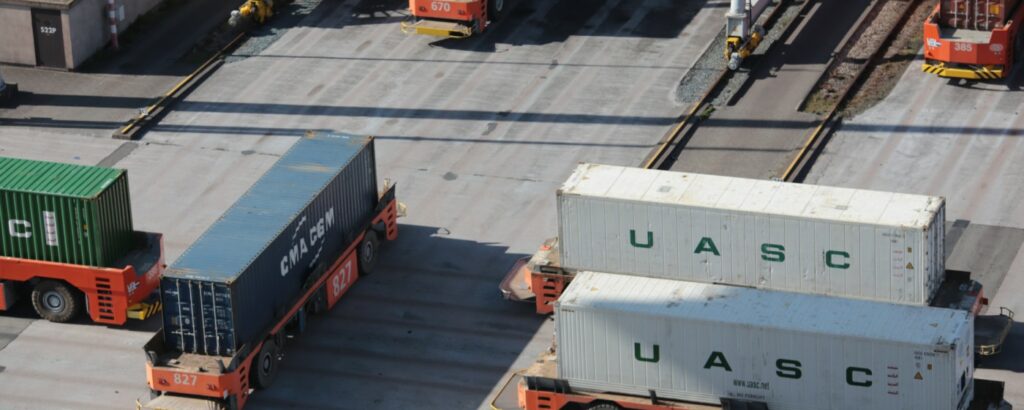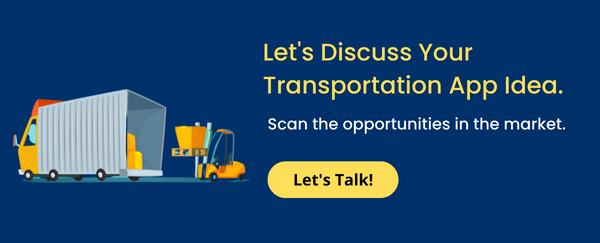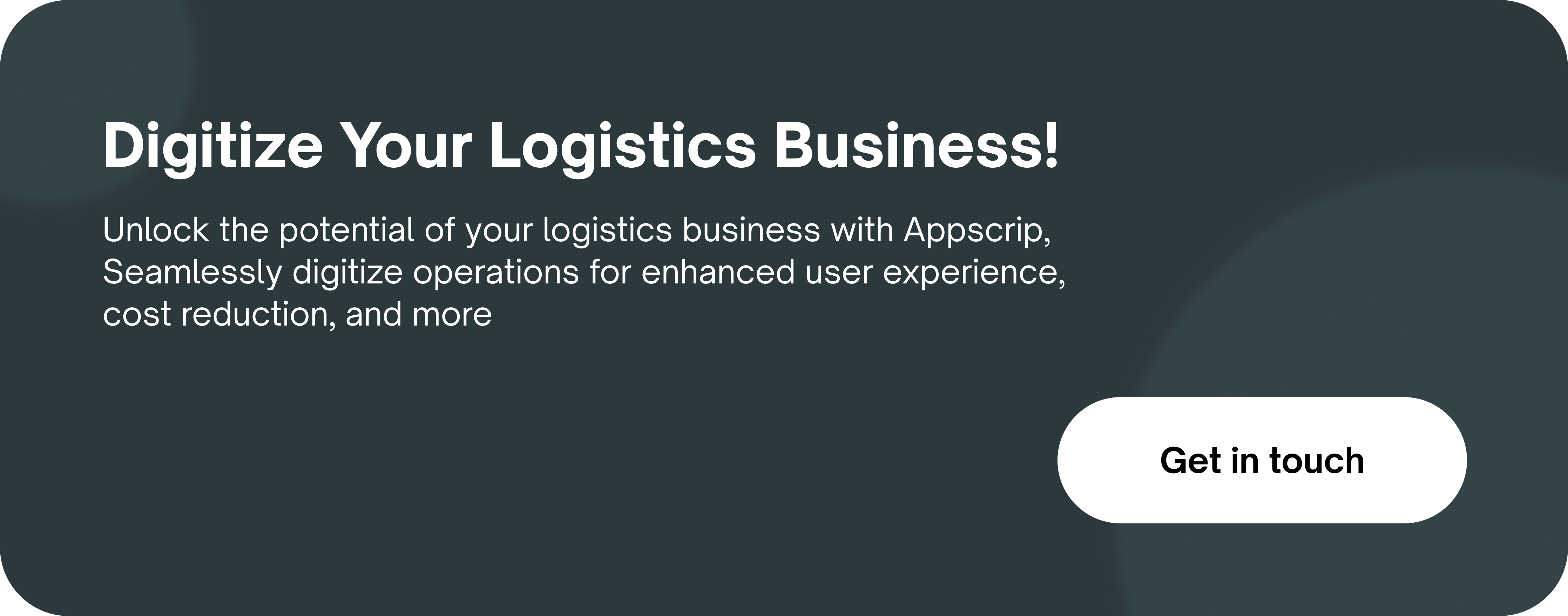The logistics industry is not only about moving goods from point A to point B. It also involves managing relationships with suppliers, tracking inventory, ensuring timely delivery, and coordinating with various stakeholders in the supply chain. In other words, logistics is the art of controlling the flow of goods, information, and other resources from the source of production to the marketplace.
However, the transformation of logistics through mobile technology will change the largely traditional, reliance on manual processes and ways of logistics management for good. The key catalyst in this transformation is mobile technology, which is reshaping the landscape of logistics optimisation.
Understanding Logistics Optimisation
Logistics optimization is about streamlining operations, reducing costs, and improving customer service. It involves finding the most efficient and cost-effective way to distribute goods from the supplier to the customer. It’s about making sure that the right product gets to the right place at the right time at the lowest possible cost.
The goal of logistics optimisation is to minimize the cost of transporting goods while maximizing customer satisfaction. This is achieved by optimizing various aspects of the logistics process, such as route planning, inventory management, warehouse layout, and transportation modes, among others.

The Role of Mobile Technology in Logistics Optimisation
Mobile technology is revolutionizing the way businesses operate, and the logistics industry is no exception. Mobile devices like smartphones and tablets, along with relevant software applications, are enabling real-time tracking of shipments, instant communication with drivers, and efficient management of inventory and warehousing.
One of the primary ways mobile technology is facilitating logistics optimization is through real-time tracking and visibility. Mobile devices equipped with GPS and internet connectivity can track the exact location of shipments in real time. This not only improves the accuracy of delivery estimates but also allows for quick resolution of issues that might delay delivery.
In addition to tracking, mobile technology is also enhancing communication within the logistics industry. With mobile devices, drivers can communicate with dispatchers and warehouse managers in real time, reporting any issues or delays immediately. This instant communication helps in making quick decisions, minimizing downtime, and improving overall efficiency.
The Features of a Logistics Mobile App
A logistics mobile app is an essential tool in today’s fast-paced, digital world that enables efficient management of transportation and delivery services. Here is a list of some of its key features:
Real-Time Tracking: The most crucial feature of a logistics app is real-time tracking. This allows users to monitor the exact location of their goods anytime, anywhere. It provides transparency into the delivery process and helps manage expectations about delivery times.
Route Optimisation: This feature uses AI and GPS technology to determine the most efficient routes for delivery. This helps to save fuel, reduce delivery times, and increase overall productivity.
Delivery Status Updates: A logistics mobile app provides regular updates about the status of deliveries. This includes information about when goods are picked up, where they currently are, and when they are expected to be delivered.
Order Management: This feature allows users to manage their orders effectively. They can place new orders, update existing ones, or cancel them if necessary. It provides a complete overview of all orders and their respective statuses.
Inventory Management: A logistics app can also include an inventory management feature. This helps to keep track of all goods in the warehouse, their quantities, and their locations. It makes it easier to manage stock and prevent shortages or overstocking.
Easy Documentation: The app should offer a feature for easy documentation, where all necessary shipping documents can be uploaded, stored, and shared digitally. This reduces paperwork and makes the process more efficient.
Seamless Integration: The application should be able to seamlessly integrate with other systems such as CRM, ERP, or accounting systems. This allows for the sharing of data across platforms, leading to more informed decision-making.
Driver Management: This feature helps in monitoring driver performance, managing driver schedules, and ensuring compliance with safety standards. It can also help in dispatching and assigning tasks to drivers based on their location or availability.
Customer Support: A logistics app should have a robust customer support feature to assist users with any issues or queries they might have. This could include a chatbot for instant responses or a ticketing system for more complex issues.
The Process of Logistics Mobile App Development
The process of logistics mobile app development involves a series of steps, each crucial in ensuring the app’s effectiveness and efficiency.
Define Objectives and Scope: The first step is to clearly define the app’s objectives and scope. This includes identifying the kind of logistics mobile app you plan to build, be it for fleet management, on-demand logistics, warehouse management, or tracking and forwarding. This initial step helps to establish the app’s direction and purpose.
Market Research: Once the objectives have been set, it’s essential to conduct market research. This involves understanding the competition, identifying the demands and needs of the target audience, and determining what features would make the app stand out.
Design the User Interface: The next step is to design the user interface of the app. This is a crucial aspect as it directly impacts user experience. The design should be intuitive, user-friendly, and visually appealing.
Coding the App: This is the actual coding and creation of the app. Here, developers create the app’s functionality based on the defined requirements and design. It’s crucial to use a robust tech stack to ensure the app’s performance, security, and scalability.
Testing: After the app has been developed, it’s time to test it. This step involves checking the app’s functionality, usability, performance, and security. Any bugs or issues identified during testing should be fixed before the app is launched.
Release: Once the app has been thoroughly tested and any issues have been addressed, it’s time to launch the app. It’s essential to have a well-planned launch strategy to ensure the app reaches the target audience effectively.
Maintenance & Updates: After the app launch, regular maintenance and updates are necessary to keep the app running smoothly and to add new features or improvements based on client feedback.

The Cost of Developing a Logistics Mobile Application
The cost of developing a logistics mobile app primarily depends on several factors, which include the complexity of the app, the number of features included, the platform (iOS, Android, or both), and the region where the app is being developed.
- Complexity of App: The complexity of the app significantly influences the cost. A basic app with simple features like tracking, notifications, and simple analytics would cost less than a more complex app with advanced features like real-time tracking, route optimization, predictive analytics, and integration with other systems.
- Features Included: The number of features also plays a significant role in determining the cost. Each feature requires time and resources to develop, and more features mean higher costs. Therefore, it’s important to prioritize the most necessary features in the initial stages to manage costs effectively.
- The platform for the App: Developing an app for both iOS and Android involves more work, thus leading to higher costs. However, cross-platform development tools like Flutter and React Native can help in lowering these costs by enabling the development of apps that work on both platforms simultaneously.
- Developer fees: The region of development is another significant factor. For instance, the hourly rates of developers in North America are generally higher than those in Eastern Europe or Asia. Therefore, outsourcing the development to a region with lower rates can help in reducing costs.
- Maintenance Costs: Post-development costs like app maintenance, updates, and marketing should also be considered.
On average, the cost of developing a simple logistics mobile app can start from around $10,000 to $20,000, while more complex apps with advanced features can go beyond $50,000 to $100,000.
Conclusion
Businesses need to invest in the right technology and partner with experienced app developers to create logistics mobile apps tailored to their needs. Appscrip, with our extensive experience in logistics mobile app development, is ready to guide you through this digital transformation. Don’t let your business lag behind in this digital era. Reach out to Appscrip today for a logistics mobile app that truly drives your business forward.










